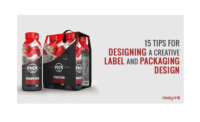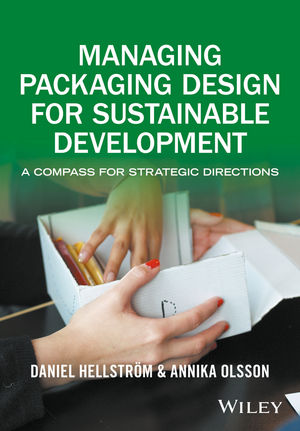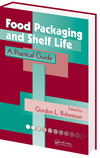Twelve tips for writing a packaging regulatory submission

submitted by Adept Packaging (adeptpkg.com).
As a packaging engineer working in an FDA-regulated industry, there may be an opportunity to generate a filing to meet a regulatory requirement. This may be a filing focused solely on packaging, or it may be simply the packaging-related sections of a much larger product or process submission. Either way, the packaging engineer is often asked to author a submission.
The goal of any filing is to gain approval/clearance in the shortest amount of time without triggering any doubt in reviewers’ minds that might lead them to ask questions. When writing the filing, leave nothing to chance. As the packaging subject matter expert (SME), generate an accurate document with thorough and compelling facts. With that goal in mind, here are some tips that may be helpful to packaging engineering authors.
- Forget what you learned in Freshman English 101. Your English teacher taught you to vary your word choice to provide interest to the reader. However, in a regulatory submission, this can be confusing. Don’t use “test,” “evaluate,” “execute,” “confirm,” “validate,” or “qualify” interchangeably in text. First of all, they represent different concepts; second, they may confuse the reviewer. It may have earned you a “B” grade in high school, but when writing a regulatory submission, use the same word or phrase repeatedly. This provides clarity for the reviewer.
- Be redundant. There will be multiple reviewers for the filing both inside your company and at the regulatory agency. Sometimes, specific reviewers will not read all sections of the submission; rather, they will likely focus on particular sections based on their expertise. So, disregard your English teacher’s instructions, and provide redundant information in multiple sections for the submission. This will assist reviewers and reduce the likelihood of receiving packaging questions.
- Seek out the style guide. Someone in your organization has a style guide that is helpful to the filing authors. This document provides guidance for all filing authors and editors. The style guide should include not only margins and typeface requirements, but also whether refrigerated temperature is shown as “2-8°C” or “2°-8°C” or “2° to 8°C.” As well as items such as whether the word “barcode” is one word or two. If a style guide exists, it should be available to all team members.
Should you find that no style guide exists, start one for packaging. List some of the sections that will require packaging information such as “Equipment,” “Packaging,” and “Distribution.” Provide some of the “jargon” that is used for a submission (see Tip #5) and perhaps a reprint of this article. The packaging style guide may be of no interest to the regulatory team, but it can be a useful tool for the Packaging Engineering group when writing future submissions.
- Know the regulations. Prior to writing, review the packaging regulations. Ensure that you have provided all information necessary to comply with the regulatory body’s guidelines. Do not provide more than the regulations require (see Tip #10) unless there is history with respect to a particular packaging concern such as pouch sealing parameters or pre-filled syringe sterility.
- Embrace the jargon. Use the terms that are shown in the applicable regulations. These are recognized by the regulatory body and are widely used in the industry. Therefore, when you use these terms, the reviewers assume that you understand and comply with the regulations. Ensure that the terms “qualification” and “validation” are used correctly throughout the filing document. Terms such as “thermal mapping,” “sampling plan,” “user requirements,” “acceptance criteria,” “tamper-evident packaging,” “container closure integrity testing,” “label reconciliation,” and “pyrogenic properties” provide a strong premise for the submission. Examples:
“SOP” or “Standard Operating Procedure” as a standard term rather than “Company Procedure,” “Manufacturing Directions,” or some other homegrown term.“Shipping Qualification” would be a better phrase than “shipping test” or “shipping study.” “Sterile Barrier System (SBS)” for the minimum packaging with product to maintain sterility for a medical device submission. “Whole package integrity test” for work proving an SBS maintains integrity after a shipping qualification for medical devices.
- Read any previous submissions. If this package and/or product has been submitted previously, read the past filing(s). It is imperative that you know what was previously submitted. If the filing defined which level of packaging is the sterile barrier, continue to support that position unless you have information to the contrary, in which case, you should provide supporting evidence/documentation. If there have been previous packaging submissions, it may be acceptable to simply focus on only the packaging changes. Examples: If the sales unit carton artwork has changed, but the carton design has not changed, this deserves to be noted. Provide a reason why this modified carton does not need further shipping qualifications. If only the IFU graphics have changed, but no structural design modification has been made, this should be explained. Indicate that no other packaging components or processes have changed; therefore, no shipping qualification is needed.If a label material changes, note the change and provide the supporting evidence that the printing and adhesion is acceptable for shipment and over time with the applicable evidence.
- Be consistent. If you use the term “shipper” in one paragraph and then use “corrugated shipper” in the next paragraph, the reviewer may think that there are two different shipper types. Be boring; be redundant. Identify one term and stick with it. In the packaging style guide, list the packaging terms that you recommend. Next to each term, note the terms that are equivalent, but should be avoided. Use the same terms over and over again/repeatedly/continuously/on and on. Examples: The term for a corrugated RSC could be “shipper” or “case” or “shipping case.” Pick one term and use it consistently. Side note: if you use the term “cardboard,” you fail Packaging Engineering 101. The Sales Unit Carton can be called many different things, e.g., unit carton, inner carton, or SBS carton. In your packaging style guide, indicate which one term you will use, and list the others as equivalent terms that must not be used for a filing.
- Define the packaging. As the SME, you should take the lead in describing the different levels of packaging, i.e., primary, secondary, and tertiary. Once you have read the regulations and any previous submissions, you can provide a detailed list of the exact terms and definitions to be used for all of the packaging elements. In order to facilitate the submission generation, the packaging terms and level lists should be in the style guide or simply shared with the internal filing team to use the terms in the same manner.
- Ensure that your packaging documents are listed (correctly) in the reference section. When citing documents, it is not necessary to call out the supporting document number, revision level, and name within the text each time. However, it is important to ensure that all supporting documentation is presented correctly in a reference section. Allow the Regulatory representative and/or the style guide to direct you in this effort. If a document has been revised, ensure that the new revision does not contradict the packaging work that was performed. If it does, be prepared to discuss this with the internal filing team.
- Act like Goldilocks. Don’t write too much. Don’t write too little. Write just the appropriate amount. The goal is to provide just enough information for a thorough understanding without triggering questions from the reviewer. Typically, a regulatory filing team will include a Regulatory person and someone from the Quality department; these are usually the people with the final say on how much information is satisfactory.
- Have thick skin. Once a filing is drafted, it will be subjected to several review levels within the company. The first internal reviewer may be the formatting expert. The second internal reviewer may check all the references. Higher management levels will be part of a review team. All will want to make changes. Sometimes text will be changed, changed again, and then revert back to the original phrase. Do not take any of the changes personally; changes are all part of the review process. The exception to this tip is that if something about packaging is stated incorrectly, it is important that you, the SME, alert the internal filing team about inaccuracies in the filing.
- You are not in control. When the filing is submitted to a regulatory body, it will not look like the text you drafted originally. It has been chopped, sliced, and diced by multiple departments for many different reasons. As you have found in your career, everyone thinks he or she knows packaging, so each person considers himself an expert on the subject. At this point, you need to consider the fact that even this article has been severely edited improved since it was first submitted for publication. Resign yourself to go with the flow; you will have a chance to celebrate your efforts once the product is approved/cleared.
These tips should make the filing process much smoother for packaging engineers. With all of these tips in mind, remember, you do not have to go it alone. There are experts at packaging engineering firms that can help with preparing these filings amongst other regulatory tasks. If you do engage an outside firm, it is important to make sure they complement your current department.
Looking for a reprint of this article?
From high-res PDFs to custom plaques, order your copy today!








